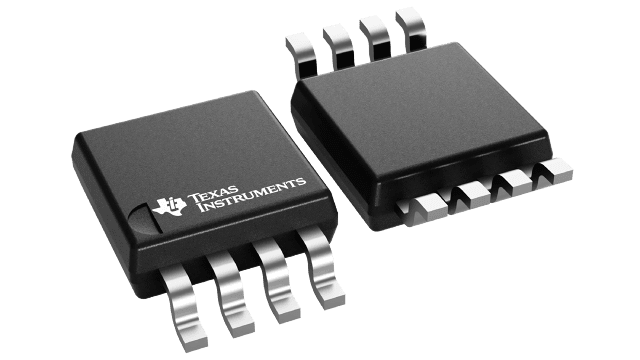Texas Instruments
SN65CML100DGK
SN65CML100DGK
Couldn't load pickup availability
SN65CML100DGK Texas Instruments - Yeehing Electronics
1.5-Gbps LVDS/LVPECL/CML-to-CML translator/repeater
Pricing (USD)
| Quantity | Unit Price |
| 1 — 99 | 3.733 |
| 100 — 249 | 3.271 |
| 250 — 999 | 2.293 |
| 1,000 + | 1.29 |
The above prices are for reference only.
Specifications
| Manufacturer | Texas Instruments |
| Product Category | LVDS Interface IC |
| RoHS | Y |
| Type | Repeater/Translator |
| Number of Drivers | 1 Driver |
| Number of Receivers | 1 Receiver |
| Data Rate | 1500 Mb/s |
| Input Type | CML, LVDS, LVPECL |
| Output Type | CML |
| Supply Voltage - Max | 3.6 V |
| Supply Voltage - Min | 3 V |
| Minimum Operating Temperature | - 40 C |
| Maximum Operating Temperature | + 85 C |
| Mounting Style | SMD/SMT |
| Package / Case | VSSOP-8 |
| Packaging | Tube |
| Height | 0.97 mm |
| Input Voltage MAX | 0.1 V |
| Length | 3 mm |
| Series | SN65CML100 |
| Width | 3 mm |
| Brand | Texas Instruments |
| Development Kit | SN65CML100EVM |
| Input Voltage MIN | - 0.1 V |
| Maximum Output Voltage | 1 V |
| Operating Supply Current | 12 mA |
| Operating Supply Voltage | 3.3 V |
| Product Type | LVDS Interface IC |
| Propagation Delay Time | 0.8 ns |
| Factory Pack Quantity | 80 |
| Subcategory | Interface ICs |
| Unit Weight | 0.000670 oz |
For more information, please refer to datasheet
Documents
| SN65CML100DGK Datasheet |
More Information
This high-speed translator/repeater is designed for signaling rates up to 1.5 Gbps to support various high-speed network routing applications. The driver output is compatible with current-mode logic (CML) levels, and directly drives 50- loads connected to 1.8-V, 2.5-V, or 3.3-V nominal supplies. The capability for direct connection to the loads may eliminate the need for coupling capacitors. The receiver input is compatible with LVDS (TIA/EIA644), LVPECL, and CML signaling levels. The receiver tolerates a wide common-mode voltage range, and may also be directly coupled to the signal source. The internal data path from input to output is fully differential for low noise generation and low pulse-width distortion.

